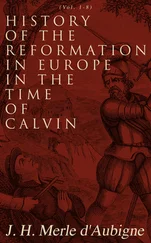William Clark - History of the Expedition under the Command of Captains Lewis and Clark, Vol. I.
Здесь есть возможность читать онлайн «William Clark - History of the Expedition under the Command of Captains Lewis and Clark, Vol. I.» — ознакомительный отрывок электронной книги совершенно бесплатно, а после прочтения отрывка купить полную версию. В некоторых случаях можно слушать аудио, скачать через торрент в формате fb2 и присутствует краткое содержание. Жанр: Путешествия и география, История, foreign_edu, foreign_antique, foreign_prose, на английском языке. Описание произведения, (предисловие) а так же отзывы посетителей доступны на портале библиотеки ЛибКат.
- Название:History of the Expedition under the Command of Captains Lewis and Clark, Vol. I.
- Автор:
- Жанр:
- Год:неизвестен
- ISBN:нет данных
- Рейтинг книги:5 / 5. Голосов: 1
-
Избранное:Добавить в избранное
- Отзывы:
-
Ваша оценка:
- 100
- 1
- 2
- 3
- 4
- 5
History of the Expedition under the Command of Captains Lewis and Clark, Vol. I.: краткое содержание, описание и аннотация
Предлагаем к чтению аннотацию, описание, краткое содержание или предисловие (зависит от того, что написал сам автор книги «History of the Expedition under the Command of Captains Lewis and Clark, Vol. I.»). Если вы не нашли необходимую информацию о книге — напишите в комментариях, мы постараемся отыскать её.
History of the Expedition under the Command of Captains Lewis and Clark, Vol. I. — читать онлайн ознакомительный отрывок
Ниже представлен текст книги, разбитый по страницам. Система сохранения места последней прочитанной страницы, позволяет с удобством читать онлайн бесплатно книгу «History of the Expedition under the Command of Captains Lewis and Clark, Vol. I.», без необходимости каждый раз заново искать на чём Вы остановились. Поставьте закладку, и сможете в любой момент перейти на страницу, на которой закончили чтение.
Интервал:
Закладка:
August 23. We set out early, and at four miles came to a small run between cliffs of yellow and blue earth: the wind, however, soon changed, and blew so hard from the west, that we proceeded very slowly; the fine sand from the bar being driven in such clouds, that we could scarcely see. Three and a quarter miles beyond this run, we came to a willow island, and a sand island opposite, and encamped on the south side, at ten and a quarter miles. On the north side is an extensive and delightful prairie, which we called Buffaloe prairie, from our having here killed the first buffaloe. Two elk swam the river to-day and were fired at, but escaped: a deer was killed from the boat; one beaver was killed; and several prairie wolves were seen.
August 24. It began to rain last night, and continued this morning: we proceeded, however, two and a quarter miles, to the commencement of a bluff of blue clay, about one hundred and eighty, or one hundred and ninety feet on the south side: it seems to have been lately on fire; and even now the ground is so warm that we cannot keep our hands in it at any depth: there are strong appearances of coal, and also great quantities of cobalt, or a crystalized substance resembling it. There is a fruit now ripe which looks like a currant, except that it is double the size, and grows on a bush like a privy, the size of a damson, and of a delicious flavour; its Indian name means rabbit-berries. We then passed, at the distance of about seven miles, the mouth of a creek on the north side, called by an Indian name, meaning Whitestone river. The beautiful prairie of yesterday, has changed into one of greater height, and very smooth and extensive. We encamped on the south side, at ten and a quarter miles, and found ourselves much annoyed by the musquitoes.
CHAP. III
Whimsical instance of superstition of the Sioux Indians—Council held with the Sioux—Character of that tribe, their manners, &c.—A ridiculous instance of their heroism—Ancient fortifications—Quieurre river described—Vast herds of Buffaloe—Account of the Petit Chien or Little Dog—Narrow escape of George Shannon—Description of Whiteriver—Surprising fleetness of the Antelope—Pass the river of the Sioux—Description of the Grand Le Tour, or Great Bend—Encamp on the Teton river.
August 25. Captains Lewis and Clarke, with ten men, went to see an object deemed very extraordinary among all the neighbouring Indians. They dropped down to the mouth of Whitestone river, about thirty yards wide, where they left the boat, and at the distance of two hundred yards, ascended a rising ground, from which a plain extended itself as far as the eye could discern. After walking four miles, they crossed the creek where it is twenty-three yards wide, and waters an extensive valley. The heat was so oppressive that we were obliged to send back our dog to the creek, as he was unable to bear the fatigue; and it was not till after four hours march that we reached the object of our visit. This was a large mound in the midst of the plain about N. 20° W. from the month of Whitestone river, from which it is nine miles distant. The base of the mound is a regular parallelogram, the longest side being about three hundred yards, the shorter sixty or seventy: from the longest side it rises with a steep ascent from the north and south to the height of sixty-five or seventy feet, leaving on the top a level plain of twelve feet in breadth and ninety in length. The north and south extremities are connected by two oval borders which serve as new bases, and divide the whole side into three steep but regular gradations from the plain. The only thing characteristic in this hill is its extreme symmetry, and this, together with its being totally detached from the other hills which are at the distance of eight or nine miles, would induce a belief that it was artificial; but, as the earth and the loose pebbles which compose it, are arranged exactly like the steep grounds on the borders of the creek, we concluded from this similarity of texture that it might be natural. But the Indians have made it a great article of their superstition: it is called the mountain of Little People, or Little Spirits, and they believe that it is the abode of little devils, in the human form, of about eighteen inches high and with remarkably large heads; they are armed with sharp arrows, with which they are very skilful, and are always on the watch to kill those who should have the hardihood to approach their residence. The tradition is, that many have suffered from these little evil spirits, and among others, three Maha Indians fell a sacrifice to them a few years since. This has inspired all the neighbouring nations, Sioux, Mahas, and Ottoes, with such terror, that no consideration could tempt them to visit the hill. We saw none of these wicked little spirits; nor any place for them, except some small holes scattered over the top: we were happy enough to escape their vengeance, though we remained some time on the mound to enjoy the delightful prospect of the plain, which spreads itself out till the eye rests upon the N.W. hills at a great distance, and those of N.E. still farther off, enlivened by large herds of buffaloe feeding at a distance. The soil of these plains is exceedingly fine; there is, however, no timber except on the Missouri: all the wood of the Whitestone river not being sufficient to cover thickly one hundred acres. The plain country which surrounds this mound has contributed not a little to its bad reputation: the wind driving from every direction over the level ground obliges the insects to seek shelter on its leeward side, or be driven against us by the wind. The small birds, whose food they are, resort of course in great numbers in quest of subsistence; and the Indians always seem to discover an unusual assemblage of birds as produced by some supernatural cause: among them we observed the brown martin employed in looking for insects, and so gentle that they did not fly until we got within a few feet of them. We have also distinguished among numerous birds of the plain, the blackbird, the wren or prairie bird, and a species of lark about the size of a partridge, with a short tail. The excessive heat and thirst forced us from the hill, about one o'clock, to the nearest water, which we found in the creek, at three miles distance, and remained an hour and a half. We then went down the creek, through a lowland about one mile in width, and crossed it three times, to the spot where we first reached it in the morning. Here we gathered some delicious plums, grapes and blue currants, and afterwards arrived at the mouth of the river about sunset. To this place the course from the mound is S. twenty miles, E. nine miles; we there resumed our periogue, and on reaching our encampment of last night set the prairies on fire, to warn the Sioux of our approach. In the mean time, the boat under serjeant Pryor had proceeded in the afternoon one mile, to a bluff of blue clay on the south, and after passing a sandbar and two sand islands fixed their camp at the distance of six miles on the south. In the evening some rain fell. We had killed a duck and several birds: in the boat, they had caught some large catfish.
Sunday, August 26. We rejoined the boat at nine o'clock before she set out, and then passing by an island, and under a cliff on the south, nearly two miles in extent and composed of white and blue earth, encamped at nine miles distance, on a sandbar towards the north. Opposite to this, on the south, is a small creek called Petit Arc or Little Bow, and a short distance above it, an old village of the same name. This village, of which nothing remains but the mound of earth about four feet high surrounding it, was built by a Maha chief named Little Bow, who being displeased with Blackbird, the late king, seceded with two hundred followers and settled at this spot, which is now abandoned, as the two villages have reunited since the death of Blackbird. We have great quantities of grapes, and plums of three kinds; two of a yellow colour, and distinguished by one of the species being longer than the other; and a third round and red: all have an excellent flavour, particularly those of the yellow kind.
Читать дальшеИнтервал:
Закладка:
Похожие книги на «History of the Expedition under the Command of Captains Lewis and Clark, Vol. I.»
Представляем Вашему вниманию похожие книги на «History of the Expedition under the Command of Captains Lewis and Clark, Vol. I.» списком для выбора. Мы отобрали схожую по названию и смыслу литературу в надежде предоставить читателям больше вариантов отыскать новые, интересные, ещё непрочитанные произведения.
Обсуждение, отзывы о книге «History of the Expedition under the Command of Captains Lewis and Clark, Vol. I.» и просто собственные мнения читателей. Оставьте ваши комментарии, напишите, что Вы думаете о произведении, его смысле или главных героях. Укажите что конкретно понравилось, а что нет, и почему Вы так считаете.












